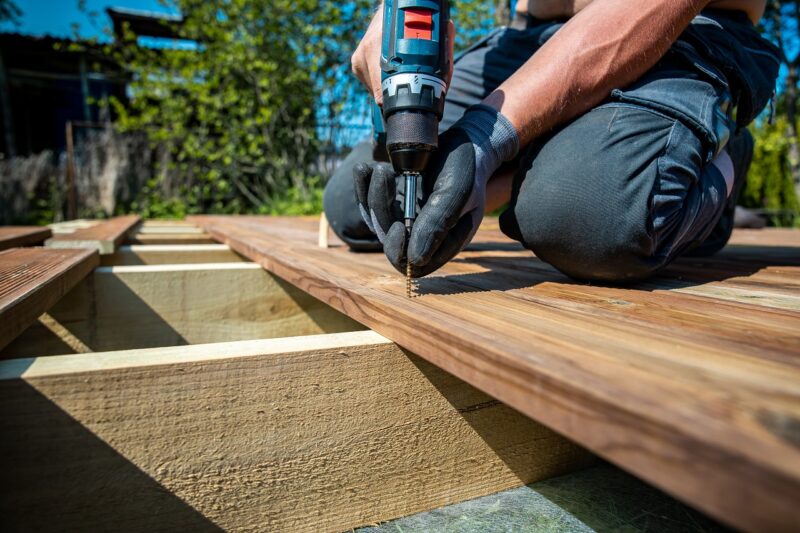Published: 15/04/25 By: Mike Bekin
When constructing a timber deck, one crucial yet often overlooked detail is the spacing between decking boards. But, as anyone who has ever completed a successful DIY project knows, the details matter.
At EcoChoice, we have been helping our clients build decking for decades. Whether you are working on a large deck for a public area or a small, decked area in your garden perfect for your morning cuppa, we can help. Get to grips with decking board spacing in this easy-to-understand guide.
Why Decking Board Spacing Matters
With something as seemingly small as spacing, it is easy to not worry too much about specifics. But when building timber decking, your spacing is absolutely crucial to the success of your construction. Why? Let’s take a look:
- Timber expands – Material Expansion: Timber naturally expands and contracts when there are changes in moisture and temperature. For example on a humid day, your timber boards might swell. Proper spacing accommodates these movements, preventing warping and buckling.
- Drainage – Well-measured spacing helps water runoff, improving the drainage of your timber decking to prevent moisture accumulation. In turn this reduces the likelihood of your timber boards rotting, helping your deck last longer.
- Ventilation – Spacing improves airflow between your boards, which is a must for allowing the timber to dry properly and preventing damp buildup beneath the surface of your decking.
If you do not get the spacing right, you leave your decking at the risk of warping, rotting and falling apart far more quickly than it should.
Recommended Spacing for Timber Decking Boards
We recommend following the advice of the Timber Decking and Cladding Association (TDCA) when it comes to board spacing. They are a super reliable resource, and an organisation which our team at EcoChoice have worked with over the years as a TDCA member.
They advise that your timber decking boards should comply with the following spacing:
- For boards up to 90mm wide: A gap of 5-6mm is advised.
- For boards wider than 90mm: A slightly larger gap of 7-8mm is recommended.
These guidelines ensure sufficient space for drainage and ventilation while accounting for timber’s natural expansion and contraction.
How Can You Make Timber Spacing Easier?
To make timber spacing easier and more consistent, use decking spacers or wedges to ensure uniform gaps between boards during installation. A spacer tool helps maintain the recommended gap while preventing boards from shifting as you work. You can also use a decking jig when constructing your decking, which makes drilling precise pilot holes a whole lot easier.
Other Factors to Be Aware Of
How you space your timber decking boards is not the only factor which will create a sturdy deck.
For example, the moisture content of your timber can drastically affect spacing.
Tropical hardwoods, such as Ekki and Opepe, will generally have a higher moisture content than other timber species and will therefore move more than, for example, a kiln-dried softwood such as Thermowood or Larch.
Note that wider boards may require slightly larger gaps to accommodate greater movement, and they will also be needed in places with high humidity or significant rainfall.
Find Sustainable Timber Decking Boards at EcoChoice
At EcoChoice, we help clients across the UK build decking they can rely on. We source and supply sustainable timber, with a wide range of species well-suited to your needs. To learn more or start an order, get in touch with our team today.
